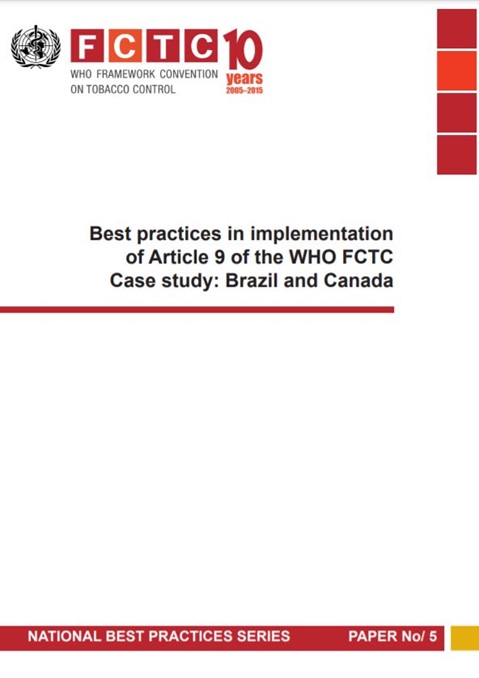Best practices in implementation of Article 9 of the WHO FCTC Case study: Brazil and Canada
Case study: Brazil and Canada
1 January 2015
| Technical document

Overview
The World Health Organization Framework Convention on Tobacco Control (WHO FCTC) was adopted by the 56th World Health Assembly in May 2003, and includes demand and supply reduction measures including Articles 9&10 on the regulation of tobacco-product contents and disclosures. The Conference of the Parties has adopted Partial Guidelines on the implementation of Articles 9&10, and a working group is actively engaged in advancing the discussion and proposing new elements to the Partial Guidelines in order to support Parties’ efforts in addressing tobacco-product regulation. This report is an example on how two Parties to the WHO FCTC have implemented Articles 9&10 of the treaty and provides case studies of Brazilian and Canadian best practice. It also responds to the recommendations made at the Regional Meeting for the Implementation of the WHO FCTC in the Americas, held in Bogotá, Colombia, from 3-6 September 2013, which highlighted noteworthy efforts by the Parties to implement treaty articles. This report describes efforts made by the governments of Brazil and Canada to comply with the requirements of the WHO FCTC in regulating tobacco-product contents (Articles 9&10). Whereas Article 9 deals with the testing and measuring of the contents and emissions of tobacco products and their regulation, Article 10 deals with the disclosure of information on such contents and emissions. This report will focus primarily on Article 9, nevertheless some reference to measures towards implementation of Article 10 will also be briefly covered.WHO Team
WHO Framework Convention on Tobacco Control DGO
Number of pages
20
Copyright
Secretariat of the WHO FCTC